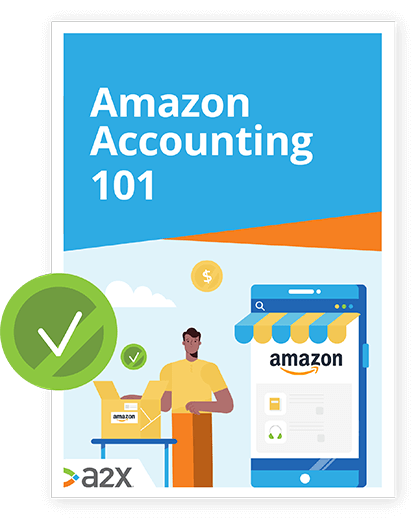
Amazon Tax Canada: What You Need To Know

Canada’s sales tax is a bit of a mutt.
It’s not quite the same breed as the US, or as Europe, but almost a cross between the two.
Canada’s sales tax is called GST (goods and services tax), and is a value-added tax, meaning it is added onto the value of an item at each stage in its manufacturing journey.
Although the GST rate is consistent across Canada, the story barely begins there. We also have HST, PST and QST to consider, and that’s where things get a little confusing for business owners.
In this guide, we’ll be talking all things Amazon tax in Canada, covering:
Table of Contents
Learn how to manage your Amazon accounting the right way
Amazon accounting can be complex. Between sales tax, different fee types and the sheer volume of transactions, there’s a lot going on. Discover the easy way to manage your Amazon accounting.
Download our free guide
*NB: Whilst A2X endeavours to use the most up-to-date information in every blog post, sales tax for ecommerce sellers is still evolving and subject to change. The below was correct at the time of writing, but please consult your accountant for the most relevant information to you.*
Don’t have one? Find specialists for Canada via our directory here.
The Canadian Sales Tax Landscape
The first record of a tax levied in Canada dates back to 1650.
It was an export tax on beaver pelts and moose hides, excised on the residents of New France.
Before the Confederation in 1867, colonial governments had been collecting taxes and remitting them to their respective mother countries: England and France. Following this, the new federal government shared responsibility with the provinces to administer taxation.
The government introduced new types of duties and excise taxes to help pay for WWI, including a retail sales tax in 1920 to deal with the fallout.
Today, after various amendments and variations, Canada now has one GST rate across the country with a few province-specific rates on top. Ecommerce sellers need to be aware of the taxes applicable to them and what makes them unique.
How Sales Tax Works in Canada
There are 10 provinces and three territories in Canada.
All of these pay the nation-wide GST, Goods and Services Tax, at a rate of 5%. The GST is applied in a value-added style, at each stage of production.
Then there’s PST, Provincial Sales Tax. As its name suggests, it is unique to the provinces that apply it. Those that do, add this on top of GST and require separate filing of each. As a sales tax, there are products which are exempt. So a seller may need to remit GST but not PST.
Use the official sites of the appropriate province to check tax exemptions (links in our table below).
HST is Harmonized Sales Tax. Some provinces that charge both GST and PST combine them for simplicity so that filing can be one process. If you register for GST in one of the five provinces that operate like this, you’ll be automatically registered for HST.
The other main tax is QST, Québec Sales Tax. Charged only in Québec, this tax is calculated on the product value before GST, and applied with it.
Who’s liable to pay Amazon tax?
In the US, an economic link considered substantial enough to pay tax to a state is called “ nexus”.
In Canada, it’s called “carry-on business”.
Sellers that meet criteria to be considered “carrying-on business” with a province or territory are eligible to pay tax there.
These are the criteria to qualify for “carry-on business”:
- Your business’ yearly revenue exceeds $30,000 CAD. Read up on “small suppliers” and the CRA’s policy here.
- You’re selling taxable items. See the list of what these are and exemptions here.
NB: Some customers may be exempt from paying tax. They will need to have official documents to this effect to provide to you. See Avalara’s help page on this for more information.
If you qualify to pay taxes, you need to register through the CRA (or Revenu Québec if that is where you need to collect). Find more information on their website here.
FBA merchants and warehouse locations
If you sell into Canada via FBA and store inventory in a warehouse there, this might qualify you for carry-on business.
Because of this, you need to look into where your inventory is stored and what the rules and rates are for that location.
Amazon warehouse locations in Canada
At the time of publishing this article, the following are Amazon warehouse locations for Canada:
| Province/Territory | Address |
|---|---|
| Alberta | 293069 Colonel Robertson Way and Crossiron Blvd, Balzac, Alberta T4A 1C6 |
| British Columbia | 450 Derwent PL Delta, British Columbia V3M 5Y9 |
| 4189 Salish Sea Way, Tsawwassen (Delta), British Columbia V4M 0B9 | |
| Ontario | 6363 Millcreek Drive Mississauga, Ontario L5N 1L8 |
| 2750 Peddie Rd. Milton, Ontario L9T 6Y9 | |
| 7995 Winston Churchill Blvd. Brampton, Ontario L6Y 0B2 | |
| 8050 Heritage Rd., Brampton, Ontario L6Y 0C9 | |
| 12724 Coleraine Dr., Caledon (Bolton), Ontario L7E 4L8 | |
| 6110 Cantay Rd. Mississauga, Ontario L5R 3W | |
| 5225 Boundary Road, Ottawa, Ontario, Canada K4N 1P6 |
Source: Taxjar.
To understand your obligations as a seller, figure out where your links are and contact those government departments for help. That is, if you don’t work with a specialist ecommerce accountant. If you do, they will be able to give you tailored advice. See our directory for trusted accounting partners.
Calculating and Remitting Amazon Tax in Canada
For Amazon sellers based in Canada, the rate of tax you need to collect and remit will depend on the location of your buyers.
Once you have registered with the CRA to collect tax, you will be able to add it to your sales. Use the information below to figure out how much tax to collect.
Tax rate by province
Below are the tax types and rates applicable to each Canadian province. Click on the province’s name for its official site with more information.
To interpret this table:
- Where a location has just HST, the GST rate of 5% has already been taken into account. The HST rate is the final rate you’ll need to collect and remit.
- For locations with a PST and GST, add the rates together.
- For locations with only GST, that is the final rate to be collected and remitted.
| Province | Province-specific tax | GST | HST |
|---|---|---|---|
| Alberta | - | 5% | - |
| British Columbia | 7% PST (Provincial Sales Tax) | 5% | - |
| Manitoba | 7% RST (Retail Sales Tax) | 5% | - |
| New Brunswick | - | (5%) | 15% |
| Newfoundland | - | (5%) | 15% |
| Northwest Territories | - | 5% | - |
| Nunavut | - | 5% | - |
| Nova Scotia | - | (5%) | 15% |
| Ontario | - | (5%) | 13% |
| Prince Edward Island | - | (5%) | 15% |
| Québec | 9.975% QST (Quebec Sales Tax) | 5% | - |
| Saskatchewan | 6% PST (Provincial Sales Tax) | 5% | - |
| Yukon | - | 5% | - |
To figure out how much tax you need to pay, Canada has its own government tax calculator here.
Recent updates and/or potential changes to tax collection in Canada
Below are two of the most recent updates which may affect whether and how you collect sales tax in Canada.
Make sure to check with your accountant what the latest developments are, or with the government authorities directly:
- British Columbia may lower their revenue threshold. See the products that may be affected here.
- Saskatchewan recognizes marketplace facilitators as responsible for tax collection. See the KPMG report on this update here.
See Deloitte’s roundup of Canadian tax news from late 2020 here.
How A2X Can Help Make Tax Collection a Breeze
When tax rates depend on the location of your buyers, things can get confusing - there are more of them than you. And collecting and remitting tax is just one aspect of your ecommerce bookkeeping.
Each Amazon bank deposit could represent numerous income and expense lines.
For a busy ecommerce seller focused on growing their business, manually calculating sales tax collected as well as fees paid, shipping costs, costs of goods sold, reimbursements received and everything in between is not exactly top of their ideal to-do list.
But without A2X, you will need to do this yourself to truly understand the health of your business (and how much tax to remit when the time comes).
A2X organizes your Amazon settlement transactions into neat journal summaries which outline all these details for you. Each deposit is split into the expenses and income that make it up, so that immediately you can see where your money is going. And if your Amazon settlement spans months, A2X splits these for you and groups them separately.
Say hello to more dynamic books, transparent cash flow and a headache-free reconciliation process.
Try A2X for Amazon & QuickBooks Online or Xero today, for free.
Also on the blog
Learn how to manage your Amazon accounting the right way
Amazon accounting can be complex. Between sales tax, different fee types and the sheer volume of transactions, there’s a lot going on. Discover the easy way to manage your Amazon accounting.
Download our free guide


